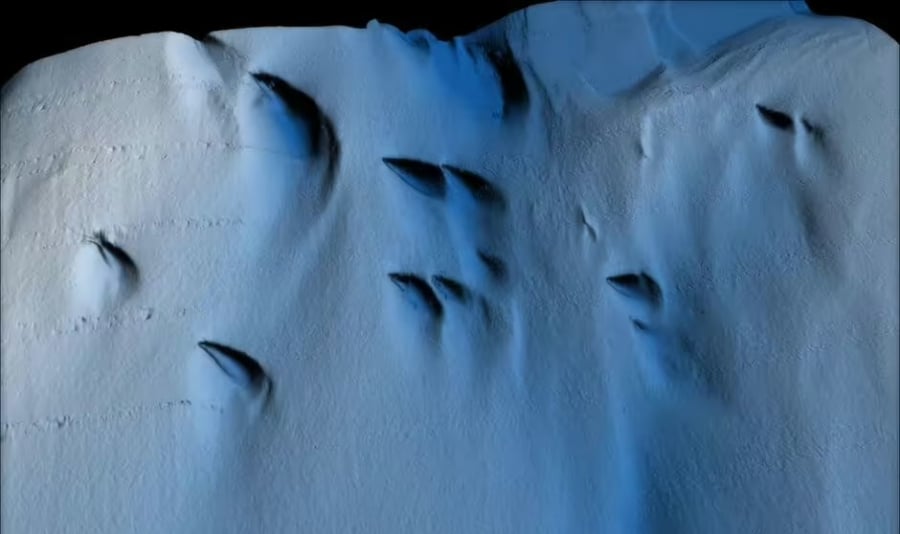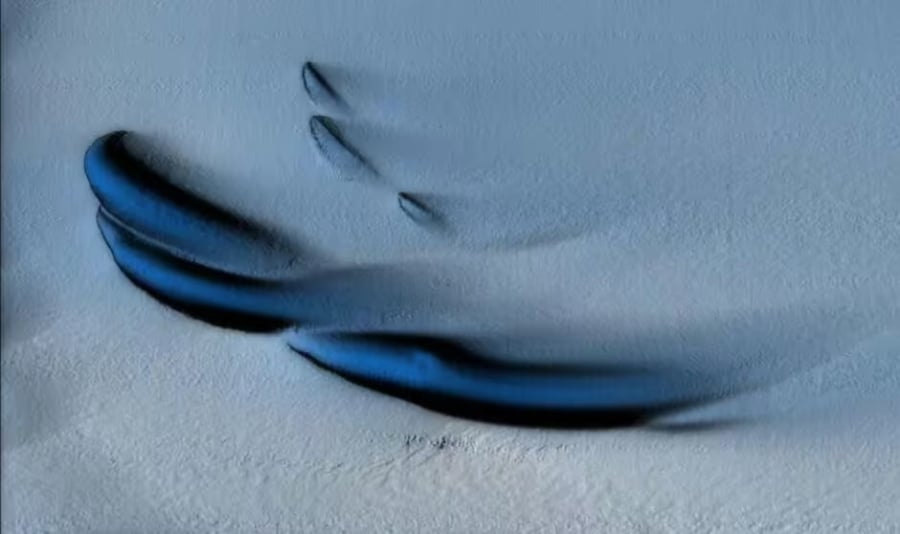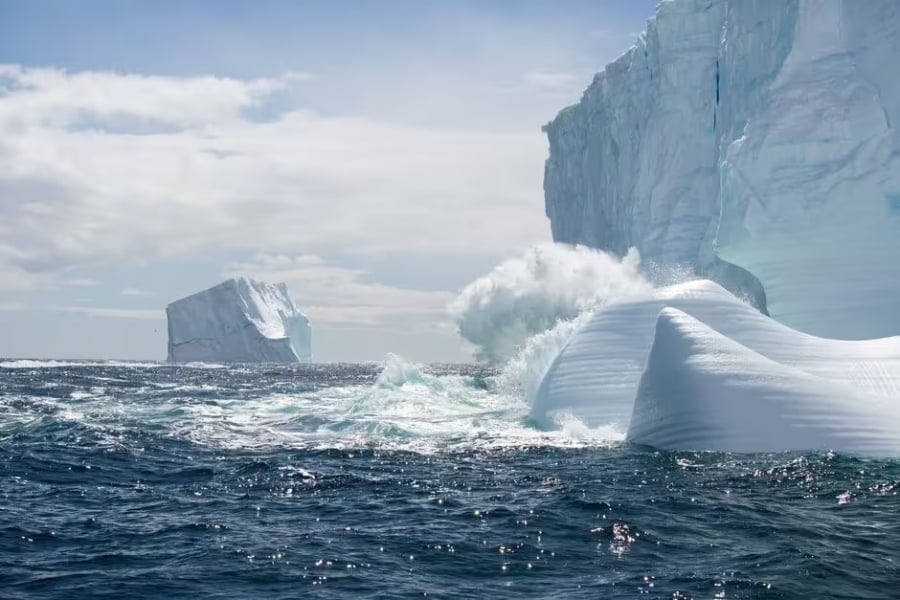In a remarkable discovery, a team of scientists has unveiled unique and previously unseen patterns hidden beneath an Antarctic ice shelf. This expedition aimed to create the most detailed images yet of the underbelly of the Dotson ice stream in West Antarctica.
In 2022, as a remotely operated vehicle (ROV) plunged 10 miles deep beneath the Dotson Ice Shelf, scientists encountered enigmatic tear-drop shapes etched on the ice surface. This discovery was published in the journal Science Advances on July 31.

Scientists have made an astonishing discovery unseen before beneath the Antarctic ice. Image: Express
Lead author of the study, Professor Anna Wahlin, a marine scientist at the University of Gothenburg, emphasizes the importance of understanding basal melt processes. According to her, this process is as crucial as ice detachment from the land to the ocean. To comprehensively grasp the Antarctic ice cycle and ice movement, studying basal melt is essential.
The Dotson Ice Shelf, a 50-kilometer-wide floating ice mass, sits off the coast of Marie Byrd Land in West Antarctica. It is part of the West Antarctic Ice Sheet, home to massive glaciers that are at risk of breaking off and potentially raising sea levels by up to 3.4 meters if the entire sheet collapses.

The enigmatic tear-drop shapes discovered beneath the Dotson Ice Shelf. Image: Express
Previous studies have indicated that the Dotson Ice Shelf is undergoing erosion due to warm seawater infiltrating its underside, causing it to detach from the land and increasing the risk of collapse. To better understand the threats faced by the ice shelf, scientists employed an ROV to sonar-scan the underside of the glacier, resulting in the most comprehensive images to date.
The survey revealed that the glacier melts fastest in areas where groundwater undermines the base. Surprisingly, however, the scientists found that the glacier’s underside was not flat but featured tear-drop shapes protruding from peaks and valleys, with some spanning up to 400 meters in length.

The Dotson Ice Shelf spans 30 miles. Image: Getty
The researchers attribute the formation of these patterns to the uneven melting of ice influenced by the Coriolis force—a force that arises due to the Earth’s rotation. This force directs water movement on the ice in a spiral pattern known as the Ekman spiral. Wahlin explains that the asymmetry of the patterns results from the Coriolis force acting on the water, creating characteristic spiral currents.
This discovery not only sheds light on the intricate processes occurring beneath the Antarctic ice shelves but also provides crucial data for predicting the future of the West Antarctic Ice Sheet and assessing its impact on global sea levels.

































